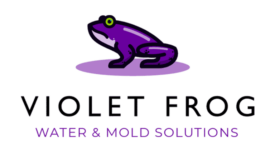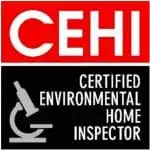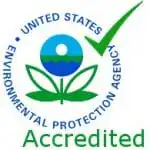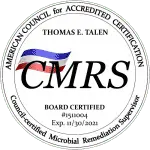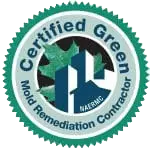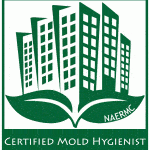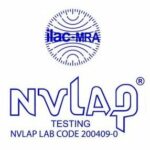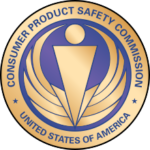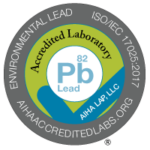Definition of black mold
Black mold, scientifically known as Stachybotrys chartarum, is a type of fungus that typically grows in damp, humid, and poorly ventilated areas. It is called “black mold” because of its dark greenish-black color, and it can release spores that can lead to health problems when inhaled. Black mold can be found in homes, offices, schools, and other buildings where there is water damage, high humidity, or poor ventilation. It is commonly found in areas such as bathrooms, kitchens, basements, and attics.
While black mold is not as common as other types of mold, it can still be a cause for concern. It has gained notoriety due to its potential health effects, which can range from mild allergic reactions to more severe respiratory problems. The severity of the health effects can depend on the level of exposure, the individual’s sensitivity, and other factors.
It is important to note that not all dark-colored molds are black mold, and not all molds that look like black mold are actually Stachybotrys chartarum. It is always best to have a professional mold inspector test and identify the mold to determine the appropriate course of action.
Why black mold is a concern
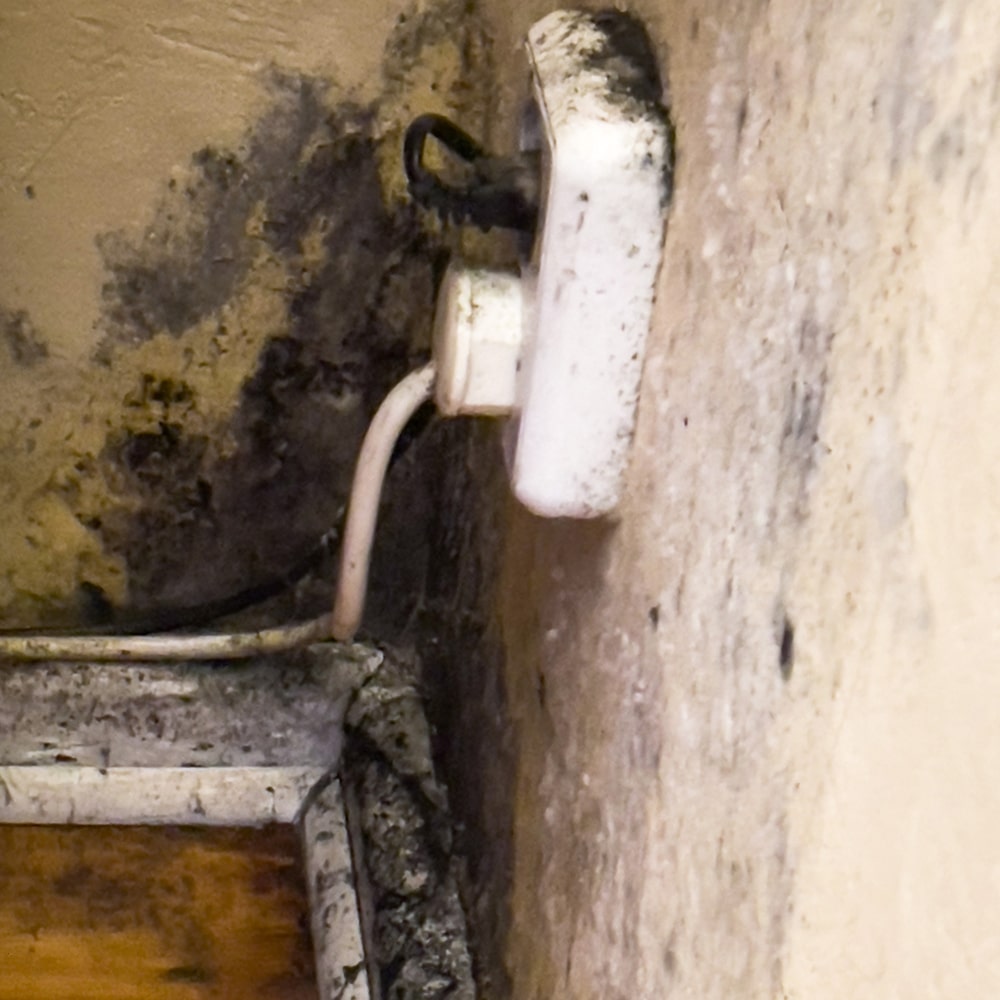 Black mold can be a serious health concern, especially when it is found in homes and other indoor environments. The reason for this is that black mold can release mycotoxins, which are harmful substances that can cause a range of health problems. The severity of the health effects can vary depending on the level of exposure, the individual’s sensitivity, and other factors.
Black mold can be a serious health concern, especially when it is found in homes and other indoor environments. The reason for this is that black mold can release mycotoxins, which are harmful substances that can cause a range of health problems. The severity of the health effects can vary depending on the level of exposure, the individual’s sensitivity, and other factors.
One of the reasons why black mold is a concern is that it can be difficult to detect. While some people may notice a musty odor or see visible signs of mold growth, others may not realize that they have a problem until they start experiencing symptoms. These symptoms can include respiratory issues, allergic reactions, headaches, and fatigue. It is important to note that not everyone will experience symptoms, and the severity of the symptoms can vary.
Another reason why black mold is a concern is that it can be difficult to get rid of. Even if the visible mold is removed, there may still be hidden mold growth that can continue to release mycotoxins. In some cases, professional mold remediation may be necessary to fully address the problem.
While black mold is not as common as other types of mold, it is still a cause for concern. If you suspect that you have black mold in your home, it is important to have it tested and identified by a professional mold inspector. Taking action to address the problem can help to protect your health and the health of your family.
Understanding Mold
What is mold?
Mold is a type of fungus that can grow in damp and humid environments. It can be found both indoors and outdoors and can come in many different colors and textures. While mold is a natural part of the environment, it can become a problem when it grows indoors and starts to release spores.
Mold spores can be inhaled and can cause a range of health problems, especially for individuals who are sensitive or allergic to them. Common symptoms of mold exposure can include respiratory issues, allergic reactions, headaches, and fatigue. It is important to note that the severity of the symptoms can vary depending on the individual’s sensitivity and the level of exposure.
Mold can grow in many different areas of a home, including bathrooms, kitchens, and basements. It is often found in areas with high humidity or where water damage has occurred. Mold can also grow on a variety of different surfaces, including walls, ceilings, and floors.
While not all molds are harmful, some types, such as black mold, can release mycotoxins, which can be harmful to health. Black mold is less common than other types of mold, but it can still be a cause for concern when it is found indoors.
Overall, mold is a common problem that can be harmful to health, especially when it is found indoors. If you suspect that you have mold in your home, it is important to have it tested and addressed by a professional mold inspector. Taking action to address the problem can help to protect your health and prevent further mold growth.
Types of mold
There are many different types of mold, and they can come in a range of colors and textures. Some common types of mold include:
- Aspergillus – This is a common type of mold that can be found indoors and outdoors. It can come in many different colors and can cause respiratory problems in individuals who are sensitive or allergic to it.
- Cladosporium – This type of mold is often found on damp materials such as carpets, wallpaper, and insulation. It can cause respiratory problems, especially in individuals with allergies or asthma.
- Penicillium – This is a type of mold that is often found in water-damaged areas of homes. It can cause respiratory problems and can also be a source of food contamination.
- Alternaria – This is a type of mold that is often found outdoors, but can also grow indoors. It can cause respiratory problems and is a common allergen.
- Stachybotrys – This is the type of mold commonly known as “black mold”. It is less common than other types of mold, but can be a cause for concern due to its potential health effects.
While some types of mold are more common than others, it is important to remember that any type of mold can be harmful to health, especially for individuals who are sensitive or allergic to it. If you suspect that you have mold in your home, it is important to have it tested and identified by a professional mold inspector. This can help to determine the appropriate course of action and protect your health and the health of your family.
How mold spreads
Mold can spread quickly and easily, especially in environments that are damp and humid. Mold spores are always present in the air, but they need the right conditions to grow and spread. When conditions are right, mold spores can settle on surfaces and begin to grow into colonies.
One of the main ways that mold spreads is through the release of spores. When mold is disturbed, such as through cleaning or air movement, spores can be released into the air and spread to other areas of the home. This is why it is important to be careful when cleaning up mold and to use proper safety equipment.
Mold can also spread through the use of contaminated materials. For example, if a piece of drywall has mold growth on it, and that drywall is used to repair another area of the home, the mold can continue to spread.
Another way that mold can spread is through the movement of people and pets. Mold spores can attach to clothing, shoes, and pet fur and be carried to other areas of the home.
Overall, mold can spread quickly and easily, especially in environments that are damp and humid. While some types of mold, such as black mold, are less common than others, any type of mold can be harmful to health. If you suspect that you have mold in your home, it is important to have it tested and addressed by a professional mold inspector to prevent further spread and protect your health and the health of your family.
Where mold grows
Mold can grow in a variety of different environments, but it thrives in areas that are damp, humid, and poorly ventilated. Some common areas where mold can grow include:
- Bathrooms – Bathrooms are a common area for mold growth due to the high humidity levels. Mold can grow on shower curtains, tiles, grout, and other surfaces.
- Kitchens – Kitchens are another area that is prone to mold growth, especially around sinks, dishwashers, and refrigerators. Spills and leaks can create a damp environment that is ideal for mold growth.
- Basements – Basements are often damp and poorly ventilated, making them a prime location for mold growth. Mold can grow on walls, floors, and other surfaces.
- Attics – Attics can also be a common area for mold growth, especially if there are leaks in the roof or poor ventilation. Mold can grow on insulation, wood, and other surfaces.
- HVAC systems – HVAC systems can also be a source of mold growth, especially if the system is not properly maintained. Mold can grow on air filters, coils, and other components.
While black mold is less common than other types of mold, it can still be found in these areas and can cause serious health problems. If you suspect that you have mold in your home, it is important to have it tested and addressed by a professional mold inspector. Taking action to prevent and address mold growth can help to protect your health and the health of your family.
Signs of mold growth
Mold growth can sometimes be difficult to detect, but there are several signs that you can look out for. Some common signs of mold growth include:
- Musty odor – If you notice a musty or earthy smell in your home, it could be a sign of mold growth. This odor is often strongest in areas where mold is actively growing.
- Visible mold growth – Mold can appear in many different colors and textures, and may appear fuzzy, slimy, or powdery. If you see visible mold growth on surfaces such as walls, ceilings, or floors, it is important to have it tested and addressed by a professional mold inspector.
- Water damage – Areas of your home that have suffered water damage are at an increased risk of mold growth. If you have experienced a leak or flood in your home, it is important to have the area inspected for mold growth.
- Allergic reactions – If you or anyone in your family experiences respiratory problems or allergic reactions that seem to be related to being in your home, it could be a sign of mold growth.
While black mold is less common than other types of mold, it can still be a cause for concern if it is found in your home. If you notice any signs of mold growth, it is important to have it tested and addressed by a professional mold inspector. Taking action to prevent and address mold growth can help to protect your health and the health of your family.
Call To Action (CTA)
What is Black Mold?
Characteristics of black mold
Black mold is a type of mold that is known for its dark, slimy appearance. It is less common than other types of mold, but it can still be a cause for concern if it is found in your home. Here are some characteristics of black mold to look out for:
- Color – As the name suggests, black mold is usually black or dark green in color. However, it can also appear as a dark brown or gray color.
- Texture – Black mold has a slimy or greasy texture, which sets it apart from other types of mold.
- Location – Black mold is often found in areas with high moisture levels, such as bathrooms, kitchens, and basements. It can grow on a variety of surfaces, including walls, ceilings, and floors.
- Health effects – Black mold can release mycotoxins, which can be harmful to health, especially for individuals who are sensitive or allergic to them. Exposure to black mold can cause respiratory problems, allergic reactions, and other health issues.
While black mold is less common than other types of mold, it can still be a cause for concern if it is found in your home. If you suspect that you have black mold in your home, it is important to have it tested and addressed by a professional mold inspector. Taking action to prevent and address black mold growth can help to protect your health and the health of your family.
How black mold differs from other types of mold
Distinct from other types of mold, black mold can be identified by its characteristic slimy, dark-colored appearance. Unlike other types of mold, which can come in various colors and textures, black mold is typically black or dark green with a slimy or greasy texture.
Another important aspect that sets black mold apart from other molds is its ability to release mycotoxins, which can cause various health problems in humans, especially those with allergies or respiratory issues. While some other types of mold also release mycotoxins, black mold is known to be particularly dangerous in this regard.
It is essential to identify and address the growth of any mold in your home, as all types of mold can pose health risks. However, black mold growth should be taken especially seriously due to its potential to release mycotoxins. If you suspect the presence of black mold in your home, it is crucial to have it inspected and addressed by a professional mold inspector. Taking action to prevent and address mold growth can help to protect your health and the health of your family.
Common areas for black mold growth
Black mold can grow in many different areas of your home, but there are some common areas where it is more likely to thrive. Here are some areas where black mold growth is most common:
- Bathrooms – Black mold can often be found in bathrooms, especially in areas with high moisture levels such as around shower stalls, bathtubs, and toilets.
- Kitchens – Kitchens are another area where black mold is commonly found, especially around sinks, dishwashers, and refrigerators.
- Basements – Basements are often damp and humid, which makes them a prime location for black mold growth.
- Attics – Attics can also be a common location for black mold growth, especially if there is poor ventilation or insulation issues.
- HVAC systems – Black mold can also grow in HVAC systems, especially in the ductwork, which can spread the mold spores throughout your home.
It is important to note that black mold growth can occur in any area of your home where there is excess moisture or humidity. If you suspect that you have black mold growth in your home, it is crucial to have it tested and addressed by a professional mold inspector. Taking action to prevent and address mold growth can help to protect your health and the health of your family.
Health Effects of Black Mold
Respiratory issues
Exposure to black mold can lead to a range of respiratory issues, especially for individuals who have pre-existing respiratory conditions such as asthma or allergies. The mycotoxins released by black mold can cause irritation and inflammation in the lungs, leading to symptoms such as coughing, wheezing, and difficulty breathing.
In addition, exposure to black mold can also lead to other respiratory issues such as sinus infections and bronchitis. These symptoms can be especially severe in individuals who have weakened immune systems, such as the elderly, infants, and those undergoing chemotherapy.
It is crucial to address any potential black mold growth in your home to prevent the development of respiratory issues. If you suspect that you have black mold growth in your home, it is important to have it inspected and addressed by a professional mold inspector. They can identify the source of the mold growth and take the necessary steps to remediate it.
It is also important to take steps to prevent the growth of mold in your home by ensuring that there is adequate ventilation, controlling humidity levels, and addressing any water leaks or moisture issues. Taking proactive measures can help to protect your health and the health of your family from the respiratory issues associated with black mold exposure.
Allergic reactions
In addition to respiratory issues, exposure to black mold can also lead to allergic reactions in some individuals. Black mold spores can trigger an immune response in the body, leading to symptoms such as sneezing, runny nose, and itchy eyes.
For individuals with pre-existing allergies or asthma, exposure to black mold can exacerbate their symptoms and make it difficult to manage their condition. It is important to note that not everyone will experience allergic reactions to black mold, but those who do can experience symptoms that range from mild to severe.
If you suspect that you have been exposed to black mold and are experiencing allergic reactions, it is important to speak with your healthcare provider to determine the best course of treatment. This may include medications to manage your symptoms or referral to an allergist for further evaluation.
Prevention is key when it comes to addressing the potential for black mold growth in your home. Taking steps to control moisture levels, properly ventilate areas of your home, and addressing any water leaks or moisture issues can help to prevent the growth of black mold and reduce the risk of allergic reactions and other health issues associated with its exposure.
It is important to take black mold exposure seriously and to address any potential growth in your home promptly to protect your health and the health of your family.
Skin irritation
Exposure to black mold can also lead to skin irritation in some individuals. Black mold contains a substance called mycotoxins, which can be irritating to the skin upon contact.
Symptoms of skin irritation caused by black mold exposure can range from mild itching to a more severe rash. In some cases, individuals may develop hives or blisters in the affected area.
It is important to note that not everyone will experience skin irritation upon exposure to black mold, but those who do should take the necessary precautions to protect their skin from further contact. This may include wearing protective clothing or gloves when cleaning or removing mold, as well as washing the affected area thoroughly with soap and water.
If you are experiencing persistent or severe skin irritation related to black mold exposure, it is important to seek medical attention. Your healthcare provider may recommend topical treatments or medications to manage your symptoms.
Prevention is key when it comes to addressing black mold growth in your home. Taking steps to control moisture levels, properly ventilate areas of your home, and addressing any water leaks or moisture issues can help to prevent the growth of black mold and reduce the risk of skin irritation and other health issues associated with its exposure.
It is important to take black mold exposure seriously and to address any potential growth in your home promptly to protect your health and the health of your family.
Other health concerns
Black mold exposure can cause a wide range of health issues beyond respiratory problems, skin irritation, and allergic reactions. Some people experience skin irritation when exposed to black mold, which can manifest as a rash or hives. In addition, prolonged exposure to black mold can lead to other health concerns, such as headaches, fatigue, nausea, and even neurological symptoms like memory loss and difficulty concentrating.
One of the reasons why black mold is such a concern is because it produces mycotoxins, which are toxic substances that can cause a variety of health problems when inhaled or ingested. Mycotoxins are produced by certain types of fungi, including black mold, and can be present in both the mold itself and in the air around it. Exposure to mycotoxins can cause a range of symptoms depending on the specific toxin and the level of exposure.
While black mold is not the only type of mold that can produce mycotoxins, it is one of the most well-known and concerning. In addition to mycotoxins, black mold can also release spores into the air, which can lead to respiratory problems and other health concerns. It’s important to address black mold growth in your home or workplace promptly to prevent exposure to these potentially harmful substances.
Where Does Black Mold Grow?
Inside the home
Inside the home, black mold can grow in various places where there is moisture. One common area for black mold growth is the bathroom, especially around the shower and bathtub where there is constant exposure to water. The kitchen is also a place where black mold can thrive, particularly in areas where there are leaks or spills that are not cleaned up promptly.
Other areas inside the home where black mold can grow include the basement, laundry room, and areas where there is poor ventilation or high humidity. For example, if the home has a humidifier that is not properly maintained, it can lead to increased moisture levels and create an ideal environment for mold growth.
It’s important to regularly inspect these areas for signs of mold growth, including visible black or green spots and musty odors. If mold is suspected, it’s essential to address the issue promptly by calling a professional to assess and remediate the problem.
Overall, while black mold is not as common as other types of mold, it can still be a significant concern when it grows inside the home. Taking proactive steps to prevent moisture buildup and regularly inspecting areas for signs of mold growth can help mitigate the risk of black mold and other types of mold inside the home.
Outside the home
Black mold can grow not only inside but also outside your home. Outdoor black mold growth typically occurs in humid and damp areas, including shaded or dark spots. Some common outdoor areas where black mold can grow include gutters, roofs, and window sills. Trees and plants that are close to your home can also attract black mold, especially if they retain moisture.
It’s important to note that outdoor black mold growth is not always harmful. However, it can still cause issues for people who are sensitive to mold spores or have allergies. Additionally, outdoor mold spores can easily make their way indoors, especially through open windows or doors.
To prevent outdoor black mold growth, you should ensure proper drainage around your home and keep the gutters and downspouts clean and clear of debris. Trim any trees or plants that are too close to your home to prevent moisture buildup. Additionally, make sure to seal any cracks or gaps around windows and doors to prevent mold spores from entering your home.
While outdoor black mold growth is less common than indoor growth, it’s still important to be aware of the potential risks and take the necessary steps to prevent its growth. Regularly inspecting and maintaining your home’s exterior can go a long way in preventing black mold growth both inside and outside your home.
Common sources of moisture
Moisture is the key factor in mold growth, and identifying the sources of moisture is crucial to preventing and mitigating mold growth. There are several common sources of moisture in homes and buildings that can contribute to the growth of mold, including leaks in roofs, windows, and pipes, high humidity levels, and condensation on surfaces such as walls, windows, and floors.
Roof leaks are a common source of moisture, as they can lead to water intrusion and damage to ceilings, walls, and insulation. Leaky pipes, both inside and outside the home, can also contribute to moisture problems and mold growth. Improper ventilation in bathrooms and kitchens can lead to high humidity levels, creating an environment that is conducive to mold growth.
In addition, basements and crawl spaces can also be sources of moisture, as they tend to be cool and damp environments. Poor drainage and water seepage can also lead to moisture problems in these areas. Outdoor sources of moisture include rainwater and high levels of humidity in the air.
It is important to address and fix any sources of moisture promptly to prevent mold growth. Regular inspections of homes and buildings can help identify potential sources of moisture, allowing for proactive measures to be taken to prevent mold growth.
Prevention measures
Preventing black mold growth is critical for maintaining a healthy living environment. One of the most important prevention measures is to control moisture levels in the home. This can be done by fixing any leaks or water damage as soon as possible and regularly checking areas that are prone to moisture, such as bathrooms and kitchens.
Another important step in prevention is proper ventilation. Ensuring adequate ventilation in bathrooms and kitchens can help to reduce humidity levels and prevent moisture buildup. Installing a dehumidifier in areas with high humidity levels can also be helpful in preventing mold growth.
Regular cleaning and maintenance is also crucial for mold prevention. Dust and debris can provide a food source for mold, so it is important to vacuum and dust regularly. Bathrooms and kitchens should also be cleaned regularly with a mold-killing cleaner.
In addition to these measures, it is important to monitor indoor humidity levels and keep them below 60 percent. Using an air conditioner or dehumidifier can help to maintain proper humidity levels.
Overall, preventing black mold growth requires diligence and regular maintenance. By taking these prevention measures, homeowners can reduce the likelihood of black mold growth and ensure a healthy living environment.
How to Detect Black Mold
Identifying black mold
Identifying black mold can be a challenging task. However, there are some key characteristics that can help differentiate it from other types of mold. Black mold typically appears slimy and dark greenish-black in color, and it has a distinct musty odor. It often grows in areas that have been exposed to excessive moisture, such as bathrooms, kitchens, basements, and areas with leaky roofs.
If you suspect that you have black mold in your home, it is important to take action immediately to prevent it from spreading and causing health problems. A mold inspection by a professional is often the best way to identify black mold, as they have the tools and expertise to properly assess the situation.
Another method of identifying black mold is by conducting a mold test. These tests involve collecting samples of the suspected mold and sending them to a laboratory for analysis. However, it is important to note that these tests are not always accurate and should not be solely relied upon for identifying black mold.
In conclusion, while identifying black mold can be challenging, it is important to take action if you suspect that you have it in your home. By being aware of the characteristics of black mold and seeking professional help, you can prevent it from spreading and causing health problems for you and your family.
Testing for black mold
When it comes to black mold, identifying it can be a challenge, especially since its appearance can vary. If you suspect that you have black mold, it’s important to get it tested by a professional. This is where mold testing services like Violet Frog can help. Located in Atlanta, Georgia, Violet Frog offers reliable and accurate mold testing services that can help you determine the presence of black mold in your home.
Mold testing involves taking samples from various parts of your home, including the air and surfaces, to determine the type and amount of mold present. It’s important to note that not all mold testing services are created equal. Some services may not provide accurate results, which can lead to misdiagnosis and ineffective treatments.
That’s where Violet Frog stands out. Their experienced professionals use the latest testing methods and equipment to ensure that their results are accurate and reliable. They also offer a range of testing options to suit your needs and budget.
In conclusion, if you suspect that you have black mold in your home, don’t hesitate to contact a professional testing service like Violet Frog. By identifying the problem early, you can take the necessary steps to eliminate it and protect your health and well-being.
When to seek professional help
If you suspect that your home or workplace has black mold, it’s important to take action immediately. While there are DIY mold testing kits available, it’s best to seek professional help from a certified mold inspector to accurately identify the type and extent of the mold growth.
Violet Frog is a reputable mold testing and remediation company based in Atlanta, Georgia, that can help you identify and remediate black mold in your home or workplace. Their certified professionals have the expertise and equipment necessary to conduct a thorough inspection and provide you with accurate results.
It’s important to seek professional help if you experience any of the health issues mentioned earlier or if you notice any signs of mold growth in your home or workplace. Black mold can spread quickly, and prompt action can prevent it from causing further damage.
In addition to offering mold testing and remediation services, Violet Frog can also provide helpful tips on how to prevent mold growth in the future. They can assist you with developing a comprehensive plan to address any underlying moisture issues that may be contributing to the mold growth.
Don’t hesitate to seek professional help if you suspect that your home or workplace has black mold. Contact Violet Frog today to schedule a consultation and ensure that your space is safe and healthy.
Black Mold Removal
DIY methods
While professional help is always recommended when dealing with black mold, there are some DIY methods that can be employed to prevent and remove the mold. First and foremost, it is important to address any sources of moisture in the affected area. This may include fixing leaks, improving ventilation, and using a dehumidifier to keep humidity levels below 60%.
Another effective method is to use a mixture of vinegar and water to clean surfaces where mold is present. This solution can be applied to hard surfaces such as walls, floors, and countertops, but should not be used on porous materials such as wood or drywall.
In addition, it is important to wear protective gear when dealing with black mold, including a respirator mask and gloves. This will help prevent the inhalation of spores and minimize the risk of skin irritation.
While DIY methods can be effective for small areas of mold growth, it is important to seek professional help for larger infestations or if the mold is located in a difficult-to-reach area such as inside walls or ductwork. The professional services of Violet Frog in Atlanta Georgia can provide a thorough inspection and safe removal of black mold. Remember, the health risks associated with black mold are serious and should not be taken lightly.
Professional removal options
Professional removal options are often the best way to ensure complete and safe removal of black mold. While DIY methods can be effective in some cases, they may not address the underlying cause of the mold growth and may not fully eliminate the problem.
One professional removal option is hiring a certified mold remediation company. These companies have trained professionals who can safely and effectively remove black mold. They use specialized equipment and techniques to ensure that all mold is properly removed, and they can also identify the source of the mold growth and provide recommendations for preventing future growth.
Another option is to hire an indoor air quality professional to conduct a mold test and provide recommendations for mold removal. These professionals can use specialized equipment to detect the presence of mold and determine the extent of the problem. They can also provide guidance on how to improve air quality and prevent future mold growth.
It’s important to note that professional removal options can be more expensive than DIY methods. However, the cost may be worth it in the long run to ensure that the mold is completely removed and to prevent future health concerns. In addition, some homeowner’s insurance policies may cover the cost of professional mold remediation.
If you suspect black mold in your home, it’s important to act quickly and seek professional help. Don’t wait until the problem becomes worse or poses a greater health risk. Contact us today to assess the situation and provide recommendations for safe and effective removal.
Recap
Key points
In summary, black mold is a type of fungus that grows in damp and humid environments. It can cause a variety of health problems, including respiratory issues, allergic reactions, and skin irritation. Black mold is a common problem, and it can be found both inside and outside of homes.
To prevent black mold from growing, it’s important to address sources of moisture and maintain proper ventilation. Professional mold testing and removal services, such as those offered by Violet Frog in Atlanta, Georgia, can help to identify and safely remove black mold.
DIY methods for removing black mold include using bleach or vinegar, but it’s important to take proper safety precautions to avoid health risks. If the mold growth is extensive, it’s best to seek professional help.
When dealing with black mold, it’s crucial to take safety precautions such as wearing protective gear and proper ventilation. Black mold can have serious health consequences, and it’s important to take steps to prevent its growth and safely remove it if necessary.
In conclusion, understanding the risks and taking proactive measures to prevent and address black mold is essential for maintaining a safe and healthy home environment.
Importance of addressing black mold promptly
Black mold is a serious issue that should not be taken lightly. It can pose a significant threat to the health of individuals exposed to it. Addressing the issue promptly is of utmost importance to prevent further health complications.
In this article, we have covered various aspects of black mold, including its causes, symptoms, identification, and removal methods. It is essential to understand that black mold is prevalent and can grow in various areas of the home. Therefore, it is crucial to be vigilant and take preventive measures to minimize the risk of its growth.
In case of black mold infestation, it is highly recommended to seek professional help from certified and experienced mold remediation companies like Violet Frog. Attempting to remove black mold without proper equipment and training can be dangerous and can lead to the spread of mold spores throughout the house.
Violet Frog is a reputable mold remediation company that provides comprehensive mold testing and removal services. They use the latest techniques and equipment to identify and remove mold from homes and businesses safely.
In conclusion, if you suspect that your home or business has a black mold infestation, it is crucial to take immediate action. Do not attempt to remove it yourself, as this can lead to further health complications. Contact a professional mold remediation company like Violet Frog to ensure that the problem is safely and effectively addressed.
